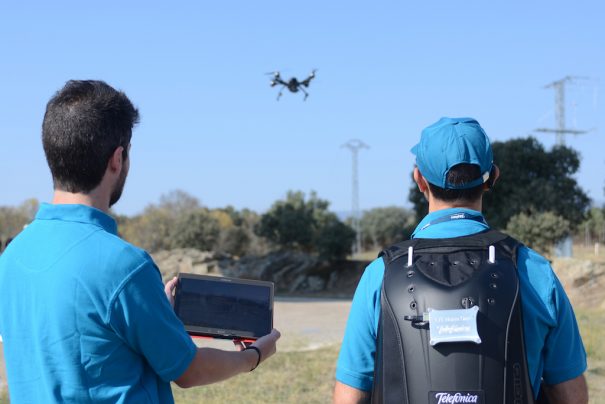Telefónica proves the advantages of miniaturization of the 4G network for rescue and supervision work
In a real environment and with a system composed of an LTE Nano backpack, that allows to deploy in a matter of minutes this communications network, to which a drone capable of transmitting video via LTE and multiple devices has been connected.
The advantages and applications of miniaturization of a 4G mobile network – with a portable backpack of less than 3 Kg. that provides voice and data coverage to a group of people in a specific area- has been the objective of the LTE Nano innovation project, What Telephone has presented in a real environment for application in rescue and supervision work.
Announced now at Mobile World Congress 2017, the LTE Nano project is one of the world's smallest deployments of an autonomous 4G network, since it runs on a hardware of only 40 grams of weight. In addition, is a new advancement in the development of portable networking products, very useful in rescue work, Emergency, Retail, Logistics, Hospitals, Offices, Etc.
 Specifically,, Telefónica has carried out in Buitrago de Lozoya the live demonstrations of the application of portable 4G networks in rescue work and supervision of critical infrastructures. In both, an LTE Nano backpack has been used, that has allowed to deploy in a matter of minutes a 4G communications network, to which a drone with the capacity to transmit video through LTE and several smartphones and tablets with voice and data transmission has been connected.
Specifically,, Telefónica has carried out in Buitrago de Lozoya the live demonstrations of the application of portable 4G networks in rescue work and supervision of critical infrastructures. In both, an LTE Nano backpack has been used, that has allowed to deploy in a matter of minutes a 4G communications network, to which a drone with the capacity to transmit video through LTE and several smartphones and tablets with voice and data transmission has been connected.
In the case of rescue work, 4G portable backpack provides voice and data communications coverage to a rescue group. In the demo, a drone with an HD video camera has streamed the flight and transmitted it to the devices of the operatives in real time through the 4G network provided by the backpack, making it easier and faster to locate a missing person in inaccessible places.
 This same service can be performed in the monitoring of hard-to-reach infrastructures, both communications and any other industrial field, that involve tasks of a certain complexity and risk and that consume a lot of time.
This same service can be performed in the monitoring of hard-to-reach infrastructures, both communications and any other industrial field, that involve tasks of a certain complexity and risk and that consume a lot of time.
In this case, the use of a 4G drone has been shown for the supervision of the old satellite communications tracking antennas of Telefónica in Buitrago de Lozoya (Madrid) What, with his 30 meters in diameter and placed more than 40 meters high on an infrastructure of several hundred tons, are a monitoring challenge due to their complexity and the risk involved when an operator has to perform this task manually.
The LTE Nano solution has been made in collaboration with the British company Quortus, technology provider that provides the 4G virtual network software solution capable of operating on such small-scale equipment. For its part, the scenarios of using a drone transmitting video through 4G have been developed in collaboration with Accenture Digital.
You liked this article?
Subscribe to our RSS feed And you won't miss anything.



